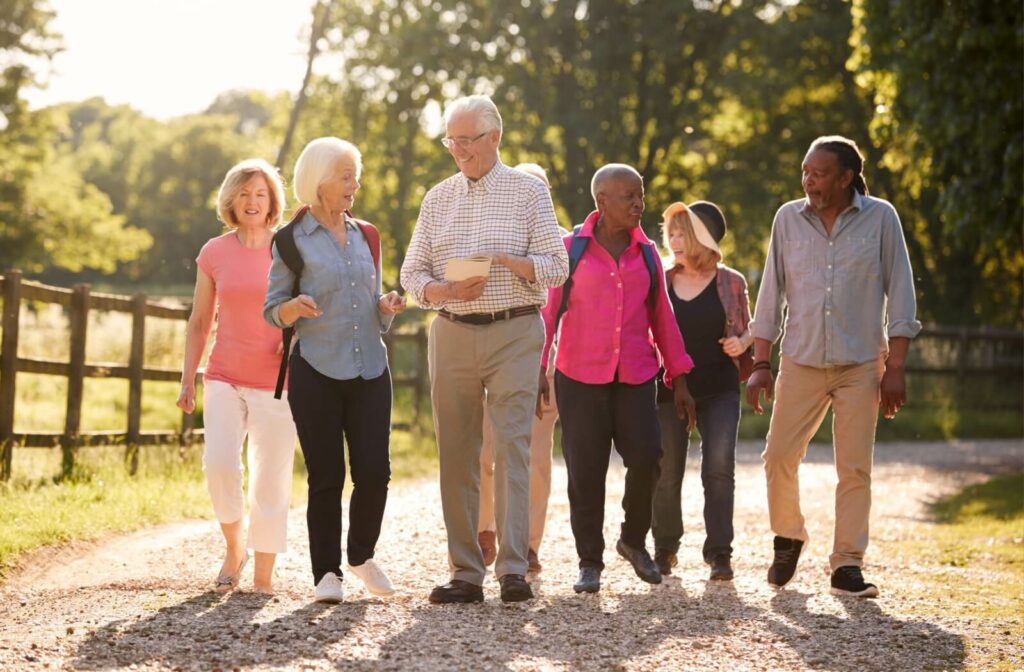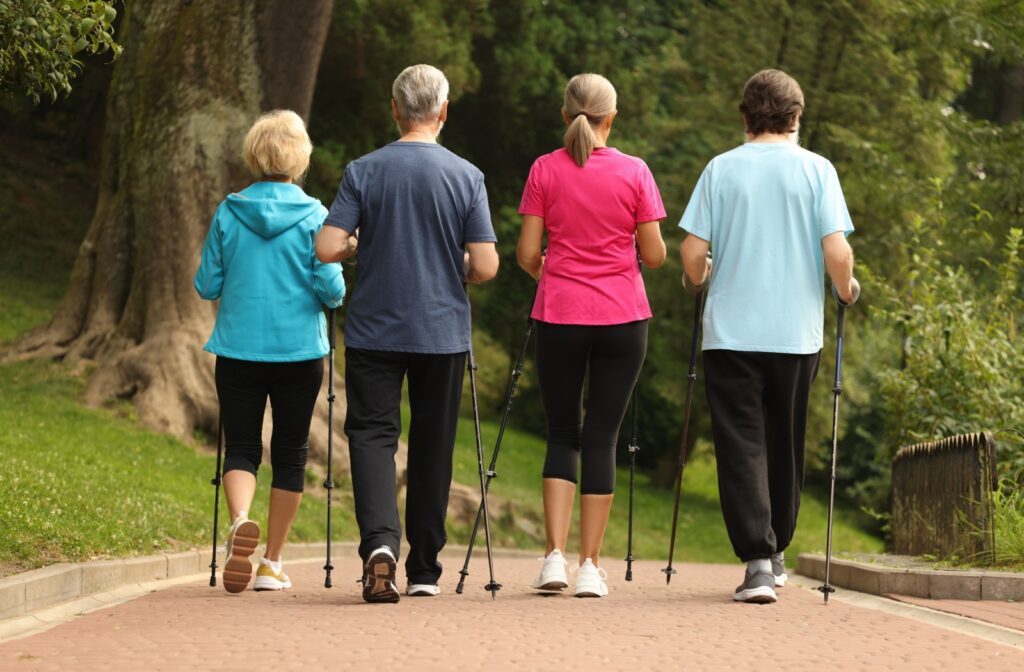Physical activity has numerous benefits at every stage of life. Among the different forms of exercise, walking stands out as a simple, low-impact activity that can bring profound benefits, especially for older adults. The benefits of walking include:
- Improving cardiovascular health
- Boosting mental well-being
- Encouraging social engagement
- Strengthening joints and muscles
- Reducing the risk of chronic disease
Walking is an excellent activity to incorporate into daily life to remain independent and healthy as loved ones continue into their retirement years.
Why Walking Matters
Walking is one of the safest and most accessible forms of exercise for older adults. Unlike high-intensity workouts, walking doesn’t require any special equipment or training. Yet, its impact on physical and emotional health is immense. Keeping the body moving helps to nurture independence, foster connections with others, and maintain overall vitality.
What Does Independence Mean?
Independence in older adults refers to the ability to live and function on one’s own without relying on others for daily tasks. This can include being able to take care of oneself, make decisions, and participate in day-to-day activities without assistance. Such activities can include:
- Walking
- Eating
- Bathing and grooming
- Dressing
- Using the toilet
- Move in and out of a chair or bed
The Benefits of Walking
Here are some of the top benefits of walking that make it such a valuable form of exercise.
Improving Cardiovascular Health
Regular walking strengthens the heart and reduces the risk of cardiovascular diseases. Brisk walking is a moderate-intensity physical activity that can help increase blood flow, lower blood pressure, and reduce LDL (bad cholesterol) levels. Maintaining heart health is critical to enjoying an active, independent lifestyle.

Boosting Mental Well-Being
Walking, such as a stroll through the park or even around the neighborhood, can do wonders for the mind, not just the body. Walking releases endorphins, known as the ‘feel-good’ hormones, which can reduce stress, improve mood, and promote relaxation. Walking also decreases the risk of cognitive impairment and dementia.
Encouraging Social Engagement
Walking can be a shared experience, whether with a friend, family member, or fellow residents in a senior living community. Social walks provide an opportunity to connect, share laughs, and build relationships—all important factors in combating isolation and loneliness among older adults.
Reducing Joint Pain
Walking can be an effective way to reduce joint pain and stiffness. The gentle movement and low-impact nature of walking lubricates the joints and can protect the knees and hips.
Walking several miles a week can prevent the development of arthritis. Consistent walking also helps improve mobility. Walking is also especially beneficial in reducing the risk of falls by enhancing balance and flexibility.
Reducing the Risk of Chronic Disease
From diabetes to high blood pressure, walking can help mitigate various chronic conditions. For older adults, being on their feet regularly means better overall health and fewer medical concerns, ultimately leading to a more active lifestyle.
Tips for Seniors to Start a Walking Routine
Getting started with a daily walking habit doesn’t have to feel overwhelming. Try these tips to ease into a healthier lifestyle:
- Start small: Begin with short walks, even if only for several minutes, and gradually increase to 30 minutes daily for 5 days.
- Choose comfortable footwear: Proper shoes provide support and reduce the risk of injuries. Look for lightweight walking shoes with cushioning and non-slip soles.
- Map a safe route: Select well-lit, paved pathways, and avoid areas with heavy traffic or uneven terrain.
- Walk at your own pace: There’s no need to rush. Walk at a pace that feels comfortable and manageable for you.
- Find walking buddies. A walk is always more enjoyable when done with others. Use this opportunity to strengthen bonds and create shared memories with your loved ones.
- Celebrate your progress: Cheer your own successes, whether that means walking a certain distance or simply maintaining routine. Positive reinforcement and appreciating your own efforts goes a long way to making walking fun.
Independent Senior Living and Walking
Independent senior living communities often promote active lifestyles with walking groups, trails, and planned outdoor activities. These environments make it easier to stay consistent with physical activity goals.
Independent living communities aren’t just about maintaining physical health—they also provide an opportunity to make friends, enjoy nature, and maintain independence in a supportive environment.
A Life of Health, Independence, & Support
Walking may seem simple, but the benefits for older adults are profound. From boosting heart health to improving emotional well-being, a daily stroll is an easy way to live a longer, healthier, and more fulfilling life.
Contact The Villages of Farragut for more information on how our independent living lifestyle fosters an active, healthy lifestyle while providing the perfect balance of independence and support.




